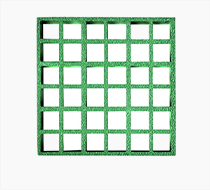loading...
- No. 9, Xingyuan South Street, Dongwaihuan Road, Zaoqiang County, Hengshui, Hebei, China
- admin@zjcomposites.com
- +86 15097380338
- Welcome to visit our website!
frp bridge deck
The Benefits and Applications of FRP Bridge Decks
Fiber-Reinforced Polymer (FRP) materials have emerged as a transformative solution in the field of civil engineering, particularly in the construction of bridge decks. FRP bridge decks are engineered to address various challenges faced by traditional materials, making them a compelling choice for modern infrastructure.
What is FRP?
Fiber-Reinforced Polymer is a composite material made of a polymer matrix reinforced with fibers. The fibers can be made from glass, carbon, or aramid, each offering unique properties such as high tensile strength, resistance to corrosion, and lightweight characteristics. These materials have gained popularity due to their durability, sustainability, and versatility.
Advantages of FRP Bridge Decks
1. Lightweight One of the most significant advantages of FRP decks is their lightweight nature. Compared to traditional concrete or steel decks, FRP materials can significantly reduce the overall weight of a bridge structure. This property not only simplifies transportation and installation but also reduces the structural load on supporting elements, allowing for innovative design solutions.
2. Corrosion Resistance FRP is inherently resistant to corrosion, making it an ideal choice for environments exposed to moisture, chemicals, and salts. Traditional materials, like steel, often suffer from corrosion over time, necessitating costly maintenance and repairs. FRP bridge decks maintain their integrity and performance over the long term, thus reducing lifecycle costs.
frp bridge deck

3. High Strength-to-Weight Ratio The strength-to-weight ratio of FRP materials allows for thinner and more efficient designs without compromising safety. This means that engineers can create sleeker, more aesthetically pleasing structures that adhere to contemporary design principles while also maintaining structural reliability.
4. Ease of Installation The prefabrication of FRP bridge decks allows for rapid installation on-site. This quality can significantly reduce construction time, lowering labor costs and minimizing disruptions to traffic. Consequently, FRP systems are particularly advantageous in urban settings or areas with heavy traffic where timely completion is essential.
5. Sustainability The use of FRP materials contributes to sustainable construction practices. The longevity and durability of FRP reduce the need for frequent replacements, leading to less material consumption over time. Additionally, many FRP products are recyclable, further supporting environmental stewardship in construction.
Applications in Infrastructure
FRP bridge decks are being implemented in various infrastructure projects worldwide. They have found applications in pedestrian bridges, rail bridges, and light vehicular traffic bridges. Their adaptability makes them suitable for bridges spanning challenging terrains or regions with harsh environmental conditions. As cities continue to evolve and age, integrating FRP technology into bridge rehabilitation projects can provide a smart solution to extend service life without completely rebuilding existing structures.
Conclusion
In conclusion, FRP bridge decks represent a significant advancement in bridge engineering. The integration of these lightweight, corrosion-resistant materials can enhance the performance, safety, and longevity of bridges. As technology continues to evolve, FRP materials are likely to play an increasingly vital role in developing sustainable infrastructure solutions for the future. For engineers and planners, choosing FRP for bridge decks means investing in resilience and innovation, ensuring that our infrastructure can meet the challenges of tomorrow.
-
GRP Structures: The Future of Lightweight, High-Performance EngineeringNewsJun.20,2025
-
FRP Water Tank: High-Performance Storage for Corrosive and Clean Water SystemsNewsJun.20,2025
-
FRP Square Tube: The New Industry Standard for Chemical and Structural ApplicationsNewsJun.20,2025
-
FRP Pultruded Profiles: The Ultimate Choice for Lightweight Structural StrengthNewsJun.20,2025
-
FRP Handrails: The Safer, Smarter, and Stronger Choice for Modern InfrastructureNewsJun.20,2025
-
FRP Grating: The Smart Solution for Durable, Lightweight Industrial FlooringNewsJun.20,2025
-
Why Choose a Galvanized Water Tank for Your Storage NeedsNewsMay.21,2025
